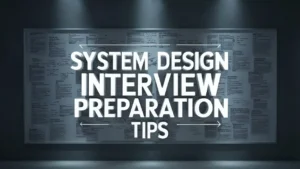Introduction: Why Effective Delegation Matters
Delegation is a critical skill in any leadership role, yet many managers and leaders struggle with it. Effective delegation isn’t just about assigning Effective Task Management it’s about setting up others for success by providing clear, structured information. Without proper guidance, employees may feel lost or unsure, leading to inefficiencies, frustration, and unsatisfactory outcomes.
The 5 steps to effective task management delegation outlined in this guide ensure that every task you delegate is executed smoothly and aligns with your expectations. By covering key aspects such as output, purpose, inputs, constraints, and next steps, this approach minimizes misunderstandings and empowers your team to perform confidently. Let’s dive into each of these essential steps and explore how they can transform your team’s Task management.
Step 1: Define the Output or End Result
The first step in effective delegation is clarifying the output—that is, defining what the finished Effective Task management should look like. Employees need to understand what “done” and “good” look like to avoid ambiguity and aim for a clear target. By setting these expectations upfront, you give your team a concrete goal to work toward, which increases the likelihood of a satisfactory Effective Task management.
How to Specify the Output
When defining the output, ask yourself:
What does a successful completion of this task look like?
Are there specific criteria for what qualifies as “good” or “excellent” work?
How will I measure the final result?
Example:
If you’re delegating the creation of a marketing report, specify that the report should include performance metrics, key insights, and recommendations for improvement of Effective Task management. Additionally, clarify if you expect it in a particular format, such as a PowerPoint presentation or a written report.
Providing clear output expectations prevents misunderstandings and saves time on revisions. It allows your team to know exactly what they’re working towards and how to hit the mark.
Step 2: Explain the Purpose
Once the output is clear, the next step is to convey the purpose of the task. Purpose, sometimes referred to as the “Commander’s Intent,” gives the task context by answering the question: Why is this Effective Task management important? When employees understand the reasoning behind a task, it acts as a guiding light, helping them make decisions when faced with uncertainties.
Why Purpose Matters
Explaining the purpose:
Aligns the task with broader organizational goals.
Helps the team understand the importance of the task, which can boost motivation.
Provides context for decision-making, reducing the need for constant guidance.
Example:
If you’re asking your team to develop a social media content plan, explain that the purpose is to increase brand engagement and awareness among a specific target audience. This purpose allows team members to understand the importance of appealing content and aligns their efforts with brand-building goals.
Without a clear Effective Task management, team members may struggle to see the task’s relevance or may make decisions that conflict with the organization’s goals. Purpose acts as a compass, enabling them to make better choices even without constant oversight.
Step 3: Provide Necessary Inputs
For your team to succeed, they’ll need access to the right inputs—the information, resources, Effective Task management, and tools required to complete the task effectively. Failing to provide the necessary inputs can leave employees unprepared or cause delays, as they’ll have to search for these resources themselves or come back to you for clarification.
Identifying Key Inputs
When delegating, consider:
What information is crucial for the task’s success?
Are there specific tools, documents, or data that will help the team complete the task?
Who should they reach out to if they need additional information?
Example:
If the task is to prepare a competitive analysis report, the inputs might include access to competitor data, past reports for reference, and a list of primary competitors to focus on. You might also provide names of colleagues who can offer additional insights or clarify questions.
By providing all essential inputs upfront, you reduce the need for back-and-forth communication and empower the team to work independently. Inputs ensure that your team has everything they need to tackle the task with confidence and efficiency.
Step 4: Set Constraints
Constraints define the limitations within which the task must be completed. These limitations might include budgetary constraints, deadlines, scope restrictions, or any specific requirements that the team should adhere to. Without clear constraints, team members may go off track, either by overspending, missing deadlines, or delivering results that don’t align with the original requirements.
Examples of Common Constraints
When setting constraints, think about:
Budget: How much can the team spend on this task?
Timeline: When does this task need to be completed?
Scope: Are there any boundaries for the work’s scope or deliverables?
Example:
If you’re asking for a project proposal, specify that it should be limited to 10 slides and adhere to a budget of $5,000. By setting these constraints, you ensure that the project proposal stays within acceptable parameters and that no time or resources are wasted.
Constraints not only provide structure but also encourage creativity within limits. By knowing the boundaries, your team can focus on innovative solutions that meet the requirements without overstepping them.
Step 5: Define the Next Steps
The final step in effective delegation is clarifying the next steps—the follow-up actions or checkpoints that keep the task on track. These might include setting a date for a progress check-in, establishing deadlines for different stages, or scheduling a review meeting. Clear next steps help to maintain accountability and provide your team with guidance on how to proceed after initial completion.
Best Practices for Setting Next Steps
When defining next steps, consider:
When will you check in on progress?
Are there any milestones that the team should aim to meet along the way?
How will you handle feedback or necessary adjustments?
Example:
If the task involves creating a draft presentation, schedule a check-in after the first draft is ready. For example, “Schedule a 30-minute review session on Thursday to go over the draft presentation.” This ensures that the project stays on track and that there’s an opportunity for feedback before the final submission.
Setting next steps creates a roadmap for accountability, ensuring the team understands what happens after completing each phase. It also reinforces the importance of collaboration and review, helping to catch potential issues early on.
The Importance of Communicating These Steps
Effective delegation isn’t a one-time action—it’s a process of clearly communicating expectations, supporting your team, and following up. By using these five steps, you’re setting up a structured approach that ensures tasks are completed as intended. Each step—defining the output, explaining the purpose, providing inputs, setting constraints, and outlining next steps—builds upon the last, creating a comprehensive framework that minimizes misunderstandings and maximizes productivity.
Talking through these steps in person or on a call can be particularly beneficial. Once the discussion is complete, follow up with an email summarizing these points. This approach ensures the person has a written reference to check as they work, reducing the need for repeated clarifications.
Benefits of This Delegation Framework
Clarity: Each of the five steps addresses a specific area of the task, reducing ambiguity and creating clear guidelines.
Accountability: By setting milestones and check-in points, you encourage responsibility and ensure progress is tracked.
Efficiency: Providing necessary inputs and setting constraints prevents delays, enabling your team to move forward with confidence.
Autonomy: Explaining the purpose and expected outputs allows employees to make informed decisions independently, fostering a sense of ownership.
Delegating effectively not only frees up your time but also empowers your team to operate independently, make decisions, and deliver results that align with your expectations.
Practical Example: Implementing the 5 Steps
Let’s put these steps into action with a practical scenario. Imagine you’re the manager of a marketing team, and you want a team member to create a social media strategy for an upcoming product launch.
Step-by-Step Delegation Using the 5 Steps
Output: Specify that the strategy should include a content calendar, post ideas for each social media platform, and target metrics for engagement and reach.
Purpose: Explain that the purpose of the strategy is to generate buzz around the new product, increase brand visibility, and drive engagement with a specific demographic.
Inputs: Provide access to previous campaign data, the product’s unique selling points, and brand guidelines. Suggest reviewing recent industry trends for inspiration.
Constraints: Set a deadline of two weeks and a budget cap for any paid advertising efforts. Clarify that the strategy should cover only Instagram, Facebook, and LinkedIn.
Next Steps: Schedule a check-in meeting one week from now to review a draft of the strategy, allowing time for feedback before the final version is due.
By following these five steps, you’ve outlined a clear, structured approach that minimizes confusion and sets your team member up for success.
Conclusion: Embrace Effective Delegation for Better Outcomes
Mastering the five steps to effective delegation—output, purpose, inputs, constraints, and next steps—will transform your leadership skills and enhance your team’s effective task management. This structured approach provides the clarity and support your team needs to deliver their best work, while also reducing the need for constant supervision and follow-up.
Effective delegation is more than assigning tasks; it’s about empowering your team with the tools, context, and guidance they need to succeed. By following this approach, you build trust, foster autonomy, and create a more efficient and motivated work environment. Start applying these steps today and experience the difference in your team’s performance and morale.























